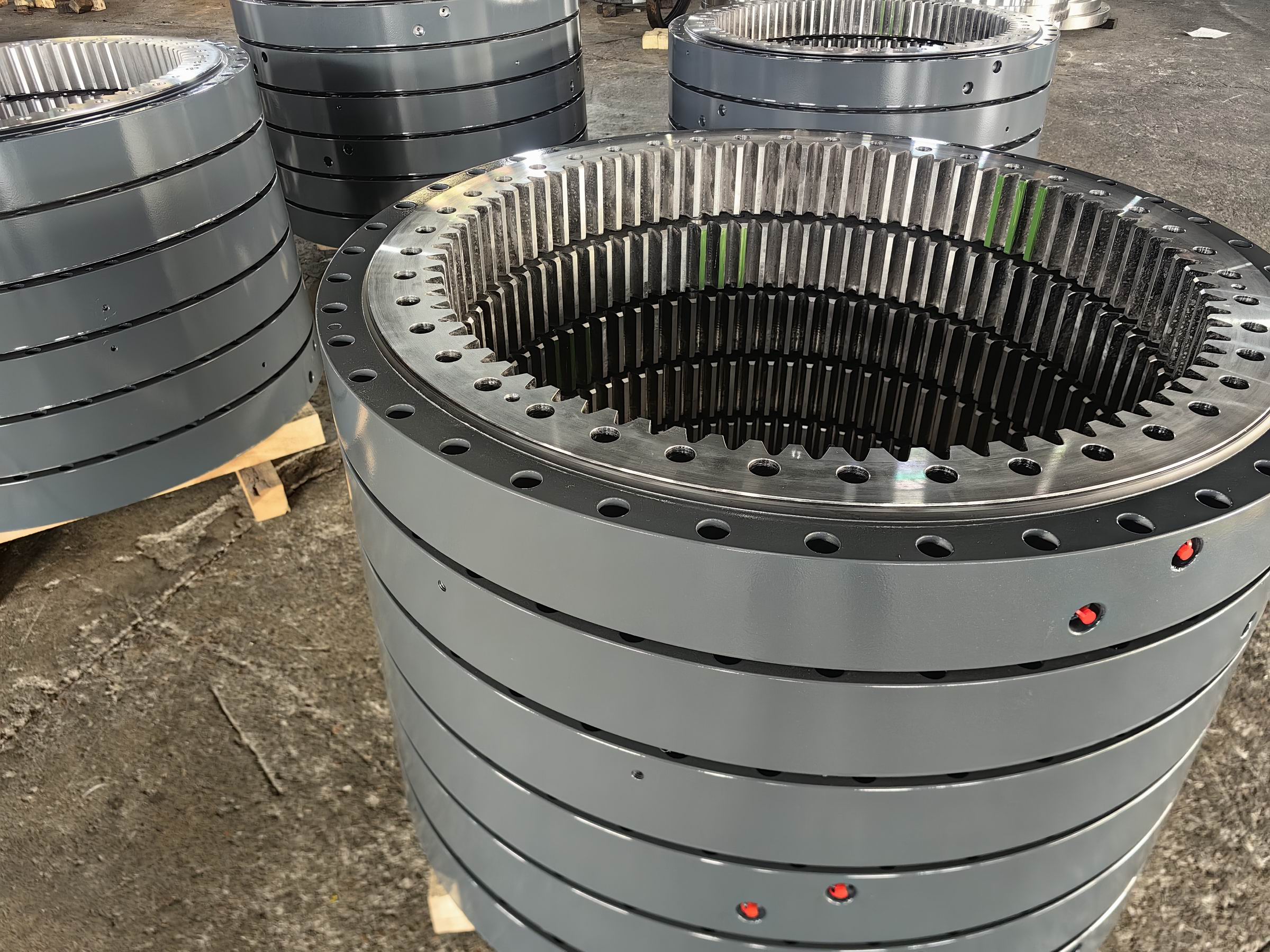Double-row ball slewing bearings are designed based on ball diameter and are categorised into two types: same-diameter balls and different-diameter balls (double-row different-diameter ball type). The advantages and disadvantages of each type, along with selection recommendations, are as follows:
1. Same-diameter ball design
Advantages: Relatively simple manufacturing process and lower cost; easy to install and maintain, suitable for applications with relatively small radial loads (generally requiring radial force ≤ 10% of axial force) such as 1510.
Disadvantages: Poor uniformity of load distribution, weak adaptability to overturning moments, and lower load-carrying capacity compared to different-diameter ball designs 59.
2. Different-diameter ball design
Advantages: The upper and lower rows of steel balls have different diameters (typically smaller upper row and larger lower row), optimising load distribution based on force application. Both rows have a 90° load angle, enabling simultaneous of larger axial forces, overturning moments, and sudden radial forces (special raceway design required when radial force exceeds 10% of axial force). The overall structure is more robust with strong overturning resistance.
Disadvantages: Higher manufacturing costs, and larger radial/axial dimensions, with certain requirements for installation space.
3. Selection Recommendations
Prioritise non-uniform diameter ball designs:
Equipment subjected to heavy loads and high overturning moments (e.g., tower cranes, port handling machinery);
Radial force to axial force ratio > 0.1, or operating conditions involving impact loads.
Consider same-diameter ball-type slew bearings:
For medium to low loads, small radial forces, and cost-sensitive applications (e.g., light-duty truck cranes and truck aerial work platform) 610.
Summary: Different-diameter ball-type slew bearings excel in performance and are suitable for heavy machinery; same-diameter ball-type swing bearings offer better cost-effectiveness and are suitable for conventional loads. When selecting, consider load type, radial/axial force ratio, and installation space requirements.


